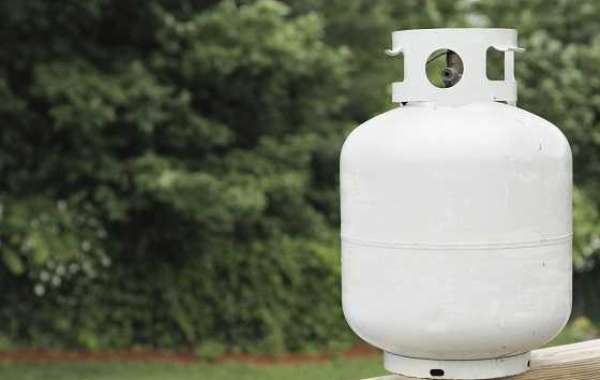This article presents the findings of a comparative study of three culture regimens used for the anaerobic chamber culture of clinical specimens submitted for bacteriological investigation: (i) the routine bench technique in current use in this laboratory; (ii) a 48-hour primary plating regimen; and (iii) an anaerobic chamber of the flexible type as described by Aranki et al., (1969). The routine bench technique in current use in this laboratory was found to have the highestIt was discovered that the routine bench technique that is currently being used in this laboratory has the highest

Pus samples were collected from patients in the operating room, then immediately transported to the laboratory in sterile MacCartney's bottles.
In order to prepare the thioglycollate medium, haemin at concentrations of B
D
5 pg per ml and 1 mg per ml, respectively, was added to the medium
The research on carbohydrate fermentation was built on Holdeman and Moore's (1972) medium, which served as the basis for the work
Tween 80, which is manufactured by Sigma Chemical Co
was added to the mixture when that medium was used for research on the fermentation of gram-positive cocci
The study was conducted by adding Tween 80 to the mixture
The researchers conducting the fermentation studies used the carbohydrates that Holdeman and Moore (1972) had listed as being present in each specific genus
The Indole Nitrite Broth was created by following the instructions supplied by the manufacturer, Beckton-Dickinson Ltd, which is located in Wembley, Middlesex
These instructions called for a dehydrated product that is available for purchase in the market
In addition, one milliliter of pus was transferred to a bottle that already contained cooked meat broth containing glucose
After the step of plating, the blood-agar and kanamycin-brucella-agar plates were placed in a steel anaerobic jar that was manufactured by the Stuart Scientific Company
The jars were prepared in accordance with the instructions given by Watt and Collee (1974), which required the addition of a modified catalyst sachet (Baldwin, 1975) that included 8
5 grams of Cold Catalyst D
The jars were then sealed and labeled with the appropriate information
Swabs of purulent material were treated in a manner analogous to this, with the one notable difference being that they were not inoculated with a glucose-cooked-meat broth
When it came time to sterilize the loops and straight wires, they were placed inside of a small micro-incinerator that was built from a small electrical fire bar that was connected to a variable transformer (while the operator was protected by the appropriate safety precautions)
The capability of the chamber atmosphere to support the growth of the Clostridium tetani strain NCTC9569 was evaluated by streaking the bacterium on blood agar and incubating it in an anaerobic jar that contained the chamber atmosphere but did not contain a catalyst. This was done in order to determine whether or not the chamber atmosphere could support the growth of the bacterium. This was done in order to keep an eye on the condition of the air inside the chamber. There was never any attempt made to take any other kinds of measurements at any time. An aerobic incubator was used to house both a plate composed of blood agar and a plate composed of MacConkey's agar at the same time. In accordance with the method described by Watt and Collee (1974), both the second blood agar plate and the kanamycin-brucella agar plate were put through anaerobic incubator incubation in jars. This was done in order to kill any bacteria that might have been present on the plates.
The primary plating procedure, which takes forty-eight hours to complete.
The specimens for this regimen were plated in the exact same manner as those for the conventional bench regimen; however, the primary anaerobic plates were allowed to incubate in the anaerobic jars for an additional forty-eight hours prior to the first examination. This was done so that the results of this regimen would be comparable to those of the conventional bench regimen. In order to guarantee that the findings would be reliable, this step had to be taken.
At the end of the first day, the aerobic plates were read, and at this point, organisms were collected and identified. Readings were taken from plates that had been incubated anaerobically using the standard bench regimen at 24 and 48 hours after the start of the experiment. They were re-incubated for an additional three days, and after a total of five days had passed, the results were finally read. During the course of the examination of the plate media, the organisms that were found to be present in the two bench routines were isolating and identifying themselves as they were coming to light during the process.
Bottles of the medium were either left inside the chamber for three days (with the caps loosened) or heated in a boiling water bath (with the caps loosened) for thirty minutes (with the caps tightened), both of which were done to remove dissolved oxygen before the bottles were used in the chamber regimen.
The determination of which bacteria are able to exhibit facultative behavior.
In order to determine the identities of all aerobic and facultative bacteria, the procedures that Cowan (1974) outlined were followed to the letter.
Identifying anaerobic bacteria through testing in the absence of oxygen
Evaluations to determine responsibility
Sutter, Vargo, and Finegold (1975) used patterns of antimicrobial sensitivity or resistance to categorize anaerobic gram-negative bacilli as belonging to either the genus Bacteroides or Fusobacterium. These research results were recently published in the peer-reviewed journal Microbiology. Bacteroides sp. or Fusobacterium sp.
Anaerobic gram-positive cocci were identified by using biochemical fermentation tests (Holdeman and Moore, 1972) and by morphological characteristics noted in wet preparations from 24-h thioglycollate cultures examined under phase-contrast microscopy with a Watson Hilux 70 microscope with Phase 70 fittings (M. L. welchii type-A antitoxin (Wellcome Laboratories, Beckenham, Kent) in conjunction with other biochemical tests listed by
Anaerobic gram-positive bacilli that did not produce spores when grown in a medium consisting of glucose and cooked meat for up to three weeks at a temperature of 30 degrees Celsius were given the name anaerobic non-sporing gram-positive bacilli and were not identified any further. This group of bacilli was given the name anaerobic non-sporing gram-positive bacilli and was not identified any further.
RESULTS Throughout the course of this investigation, a total of twenty samples of pus in liquid form and five pus swabs in Cary and Blair transport medium were analyzed.
Swabs were taken for examination of the area after an incision was made into an abscess or after a cavity was opened.14 of the samples showed evidence of concurrent growth of facultative bacteria; however, in these specimens, the number of anaerobes outnumbered the number of facultative bacteria by a ratio of 3.9 to 1. fragilis (laparotomy wound) and F. cloacae (F. cloacae) were found to be present.
After performing all of the procedures, a total of 89 anaerobes (table I) and 16 facultative and microaerophilic bacteria were cultured from the 25 samples that were provided. The primary plating regimen for 48 hours produced 87 different anaerobes, while the chamber method produced 83 different strains (tables I and II). The conventional bench method produced 33 unique strains of anaerobic incubator.








